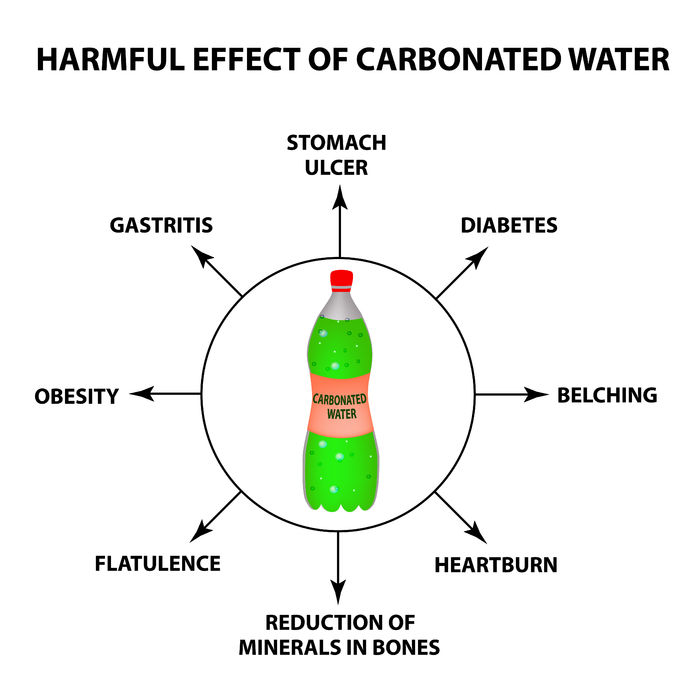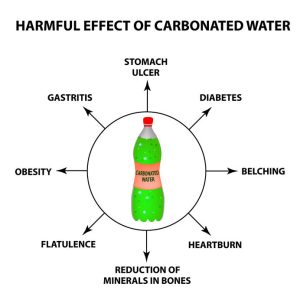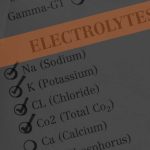

Are your client’s bubbles getting them into trouble?
Carbonated beverages remain the single most significant source of calories in the American diet. Since most soft drinks offer little, if any, nutritional benefit, they fit perfectly under the heading of “empty calories”.
How does carbonation affect workouts and weight loss?
Clients often ask us about the best method of hydrating after a strenuous hour or so at the gym. The myriad of options, from electrolyte drinks to protein shakes to caffeinated beverages, can make this decision daunting.
While it is difficult to know exactly how to respond to these requests, one thing we can tell clients with certainty is to avoid carbonated beverages, both before and following exercise.
Regular exercise is one of the best and most enjoyable methods of weight control, for loss as well as maintenance. However, excess consumption of carbonated drinks, which are often high in calories, may interfere with this process and counteract the benefits of even intense workouts. For individuals striving diligently to reduce caloric consumption, it is easy to forget that liquid calories must also be factored into a daily tally.
It’s More Than a Sugar Problem
Soft drinks may do more damage than just packing on pounds. The sugar in many sodas and energy drinks may contribute to a drop in blood sugar during exercise. While ingestion of sweet drinks may provide an initial rush of energy, the spike and subsequent crash in blood sugar often render individuals weak and fatigued, directly interfering with the benefits of exercise.
The Carbonated Bandit
Sugar is not the only culprit associated with nutritionally empty soft drinks. By causing excess air to build up in the stomach, carbonation will often lead to discomfort associated with bloating. This sensation, in turn, makes exercise more difficult, interfering with the productive efficiency of workouts.
Acidity and Mineral Loss
Another nasty component inherent in carbonated beverages is phosphoric acid. Ingestion of this compound leads to a disruption in the body’s delicate calcium/phosphorous ratio by causing calcium to leach out of the bones. Over time and with excess consumption of carbonated drinks, this can result in osteoporosis, which we know increases the painful incidence of fractures and bone breaks.
To take this one step further, digestion of nutrients becomes impaired as phosphoric acid overpowers the naturally occurring and necessary hydrochloric acid in our stomachs.
Most soft drinks have a pH ranging from 2-3 on the scale of 0-14, with 0 being associated with battery acid. This renders most sodas approximately 10,000x more acidic than tap water. The human body always favors homeostasis; in the case of acidity/alkalinity, our systems perform optimally at a pH of approximately 7.365, very close to neutral at 7.0.
In an effort to strike this balance when the body senses its own high acidity, it calls upon an “alkaline buffer system” to begin neutralizing its environment. This is accomplished by pulling minerals – mostly calcium — from bones, thereby depleting its very own resources.
Once calcium stores have been sacrificed, the body continues on its quest for appropriate pH and begins pulling magnesium from its largest storage bank, the muscles. As this process proceeds, the results are muscle pain, cramps, and fatigue.
Balance the Bubbles
Is soda always a poor choice when hydration comes into question? In our family, all carbonated beverages are stringently avoided for a multitude of reasons, many of which have been discussed within the body of this article. Still, an occasional soda is certainly not going to cause a major setback in terms of weight loss and exercise goals.
By encouraging clients to view this as a special treat as opposed to the norm, we can set them on a healthier track to fitness and wellness while not significantly cramping their lifestyle. Remember, we always serve as role models; our avoidance of carbonated beverages is a good idea, especially in the presence of potential clients!
Have you or your clients struggled with carbonation withdrawal?
[info type=”facebook”]Join the conversation on the NFPT Facebook Community Group.[/info]
References
https://www.npr.org/sections/thesalt/2014/10/16/356437295/should-menus-list-miles-to-walk-to-burn-off-your-meal-or-soda
https://www.getoffyouracid.com/blogs/why-is-acid-so-bad/muscle-cramps-charley-horses-and-acid
https://www.jointhealthmagazine.com/how-can-soft-drinks-worsen-your-osteoarthritis-and-joint-pain.html
http://www.sixwise.com/Newsletters/2009/June/17/Sodas-Surprisingly-Serious-Impact-on-Your-Muscles.htm
https://www.ncbi.nlm.nih.gov/pubmed/1844997
http://injuredathletes.org/blog/2013/carbonated-beverages-and-athletic-performance/
https://www.livestrong.com/article/517219-the-effects-of-carbonated-drinks-on-exercising/




